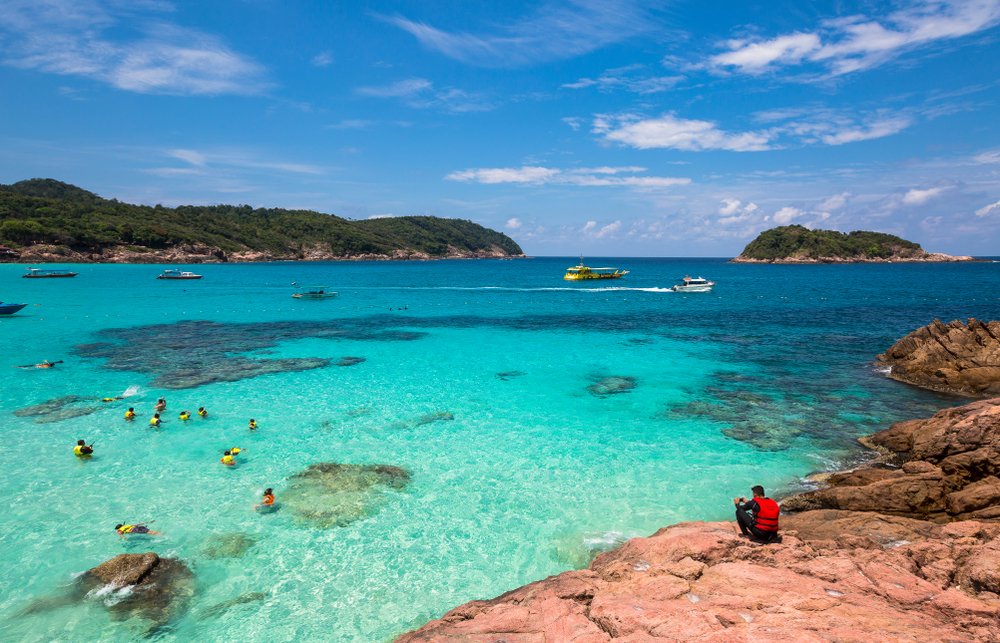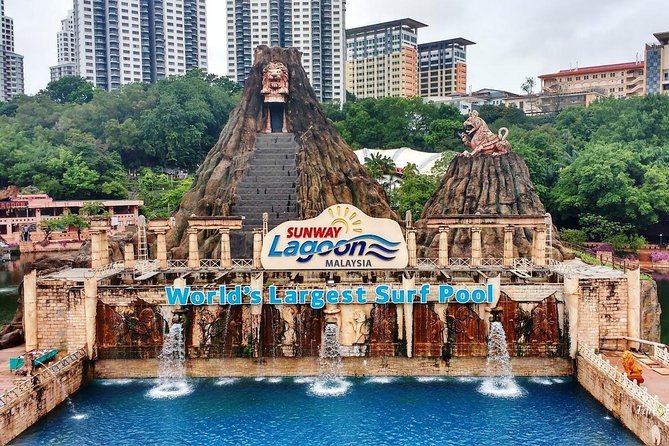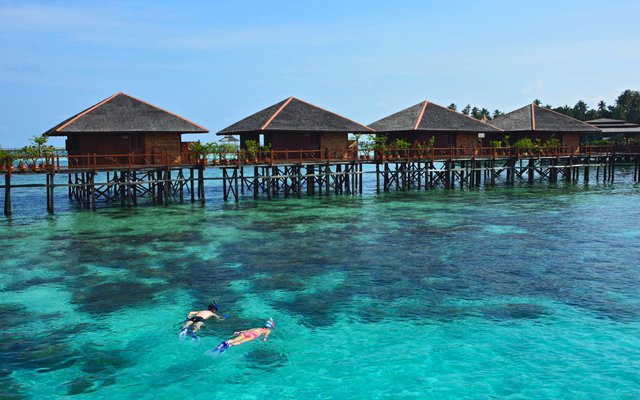Introduction
Mount Kinabalu, or Gunung Kinabalu as it is locally known, is not just Malaysia’s highest peak but a revered destination that draws trekkers from all around the globe. Rising majestically at 4,095 meters (13,435 feet) above sea level, Mount Kinabalu is iconic for its breathtaking scenery, rich biodiversity, and deep cultural significance to the indigenous communities of Sabah. This complete guide aims to equip adventurers with essential information for successfully navigating the journey to this magnificent mountain, including the best time to climb, how to prepare, what to bring, accommodations, activities, and more.
➡️ Click here to check the latest Sabah weather
1. Overview of Mount Kinabalu
Cultural Significance
Mount Kinabalu holds profound spiritual significance for the indigenous Kadazan-Dusun people, who believe that the spirits of their ancestors reside within its peaks. Climbing the mountain is not only a physical challenge but also a cultural experience, allowing adventurers to connect with local history and traditions.
Biodiversity
The mountain and its surrounding Kinabalu Park are UNESCO World Heritage Sites, renowned for their exceptional biodiversity. Home to over 600 species of ferns, 100 species of mammals, and 326 species of birds, Mount Kinabalu offers nature lovers a glimpse of unparalleled natural wonders, including rare plants like the Rafflesia flower and Nepenthes rajah pitcher plants.

2. Best Time to Climb
The best time to climb Mount Kinabalu is during the dry season, from March to September. During these months, the weather is generally clear, making for optimal climbing conditions.
- March to May: Moderate temperatures and decreasing rainfall make this a popular time for climbers. Wildlife is also more active, providing excellent opportunities for birdwatching.
- June to September: This period sees the peak climbing season due to favorable weather conditions. However, it can also get crowded, so booking in advance is advisable.
Weather Conditions
During the climb, temperatures can range from 15°C (59°F) to as low as 0°C (32°F) near the summit at night, especially during the early hours before sunrise. Be prepared for sudden weather changes, including rain and strong winds.
3. Preparing for Your Climb
Physical Conditioning
Climbing Mount Kinabalu typically takes two days. It’s crucial to prepare physically for the challenge, especially if you are not used to high-altitude trekking.
- Cardiovascular Fitness: Engage in aerobic exercises such as jogging, cycling, or swimming.
- Strength Training: Focus on leg muscles through squats, lunges, and step-ups. Stair training can mimic the mountain’s terrain effectively.
- Endurance Training: Take longer hikes with elevation gain to build stamina.
Acclimatization
Acclimatization is important due to the mountain’s altitude. Spend time at lower altitudes before your ascent. The Timpohon Trail provides gradual elevation, allowing climbers to acclimatize as they ascend.
4. Climbing Routes
Timpohon Trail
The Timpohon Trail is the most popular and accessible route to the summit. It spans approximately 8.5 kilometers (5.3 miles) to the Laban Rata rest house, where climbers can stay overnight before making the final ascent.
- Day 1: Begin early from the Timpohon Gate and ascend through lush rainforest, encountering various resting stations along the way.
- Day 2: Start your summit push at around 2 AM. The journey to Low’s Peak takes approximately 4-6 hours, depending on your pace.
Mesilau Trail
This alternative route is less crowded and offers stunning views. However, it is also longer and more challenging, making it suitable for experienced climbers.
5. What to Bring
Essential Gear
- Clothing: Layered clothing is essential to accommodate changing temperatures. Include thermal wear, a waterproof jacket, and breathable trekking shirts.
- Footwear: High-quality, waterproof hiking boots with good ankle support are crucial. Bring along extra pairs of moisture-wicking socks.
- Backpack: A comfortable daypack (20-30 liters) to carry your essentials during the climb.
Hydration and Nutrition
- Water: Carry a hydration bladder or water bottles. Water stations are available along the trail, but it’s good to have your supply.
- Snacks: Energy bars, nuts, and dried fruits are excellent options for quick energy boosts during your trek.
Personal Items
- Sunscreen and Sunglasses: Protect yourself from sun exposure, especially during the summit push.
- First Aid Kit: Include essentials like band-aids, antiseptic wipes, and any personal medications.
- Headlamp: A must-have for the early morning ascent.
6. Accommodation Options
Kinabalu Park Headquarters
This is the best option for climbers looking for budget-friendly accommodations. The park headquarters has dormitories and guesthouses at various price points, providing a good base before the climb.
Laban Rata Rest House
Located at 3,272 meters (10,735 feet), this rest house allows climbers to recover before their summit attempt. It features basic amenities, including dormitory-style lodging and dining facilities.
Other Lodging Options
- Resorts: For those looking for more comfort, several resorts near the park offer stunning views and amenities. Examples include The Cottage Hotel and Sutera Sanctuary Lodges.
7. Activities and Attractions
Nature Trails in Kinabalu Park
Apart from climbing, the park offers various nature trails, where visitors can explore its rich flora and fauna. Guided tours are available, focusing on birdwatching, plant identification, and cultural experiences.
Poring Hot Springs
A short drive from the park, Poring Hot Springs offers a relaxing retreat with hot springs, canopy walks, and butterfly gardens. It’s a great way to unwind after your climb.
Cultural Experiences
Engage with local indigenous communities to learn about their traditions, crafts, and connection to Mount Kinabalu. Some lodges may offer cultural performances or workshops.
8. Health and Safety Recommendations
Stay Hydrated
Dehydration can lead to altitude sickness, so drink plenty of water throughout your climb.
Watch for Altitude Sickness
Be aware of symptoms like headaches, dizziness, and nausea. If you experience severe symptoms, it’s essential to descend to a lower altitude.
Travel Insurance
It’s highly recommended to obtain travel insurance that covers trekking activities. Check that your policy includes coverage for altitude-related issues.
Follow Safety Guidelines
Always adhere to park regulations, respect local customs, and stay on marked trails to ensure your safety and that of the ecosystem.
Conclusion
Climbing Mount Kinabalu is a journey of a lifetime, blending physical challenge with breathtaking natural beauty and rich cultural heritage. By preparing adequately, understanding the best time to visit, and planning your accommodations, you can make the most of your adventure. Whether you’re seeking personal achievement, connection with nature, or cultural immersion, Mount Kinabalu offers a unique experience that promises to leave you with memories to cherish forever. Get ready to embark on this unforgettable journey to the roof of Borneo!Exploring Mount Kinabalu: A Complete Guide for Adventurers
Mount Kinabalu, the highest peak in Southeast Asia, offers a breathtaking expedition for adventurers and nature lovers alike. With its diverse flora and fauna, stunning views, and rich cultural heritage, it’s no wonder this majestic mountain draws thousands of visitors each year. In this guide, we will cover everything you need to know to ensure a smooth and memorable adventure.

You May Also Like
Your Ultimate Guide: The Best Time to Explore Redang Island
December 11, 2024Malaysia ExplorerTravelling
The Ultimate Guide to Exploring Selangor Tourist Spots
December 7, 2024Malaysia ExplorerTravelling
The Best Time for Sabah Diving Adventures
December 13, 2024Malaysia ExplorerTravelling